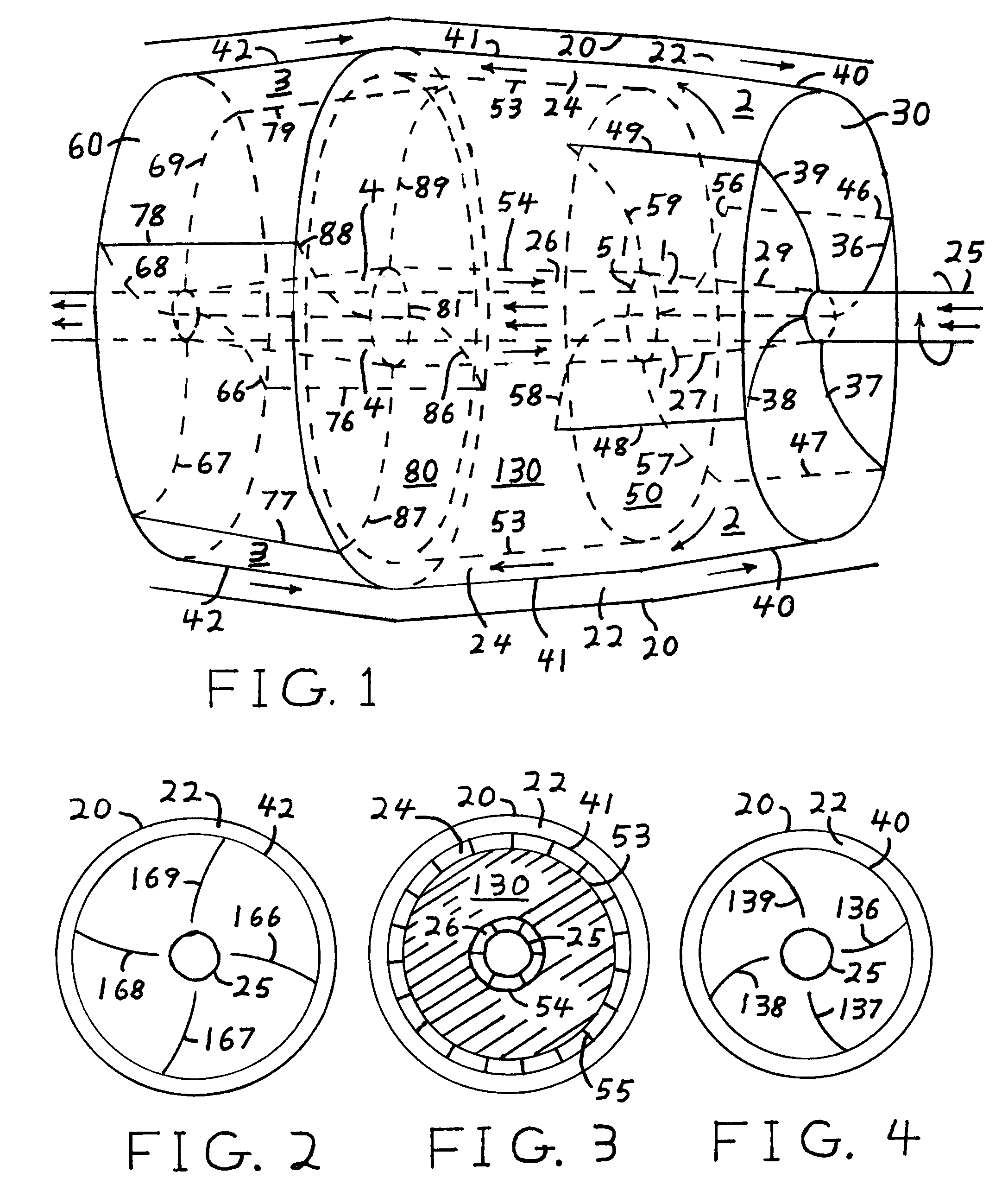Heat engine / heat pump using centrifugal fans
a technology of centrifugal fans and heat pumps, which is applied in the direction of machines/engines, domestic cooling devices, lighting and heating devices, etc., can solve the problems of energy loss, friction and pressure loss at both pistons, and the loss of working fluid
- Summary
- Abstract
- Description
- Claims
- Application Information
AI Technical Summary
Benefits of technology
Problems solved by technology
Method used
Image
Examples
Embodiment Construction
[0042]FIG. 1 shows a workable, but simplified version of the engine. Numbers 1, 2, 3, and 4 are reserved for points in the flow of the working fluid that illustrate the cycle through which the working fluid goes. Except for the containment sheet 20 on the top and bottom of the figure and used to direct a hot fluid in the channel labeled 22 between containment sheet 20 and sheet 41, all parts in the figure are rotating with a common angular velocity around the axis of the pipe 25 used to carry a cooling fluid, probably a high heat capacity liquid. The pipe 25 also carries the output torque of the engine.
[0043]The fairly thick metal sheet 30, which serves to hold in the working fluid, would best be concave when looked at from within the engine, near its center. Curved lines 36, 37, 38, and 39 represent the intersection of fan blades with sheet 30 and would best represent a firm attachment. The curved lines and thus the blades form a spiral but the spiral, for the sake of clarity in th...
PUM
 Login to View More
Login to View More Abstract
Description
Claims
Application Information
 Login to View More
Login to View More - R&D
- Intellectual Property
- Life Sciences
- Materials
- Tech Scout
- Unparalleled Data Quality
- Higher Quality Content
- 60% Fewer Hallucinations
Browse by: Latest US Patents, China's latest patents, Technical Efficacy Thesaurus, Application Domain, Technology Topic, Popular Technical Reports.
© 2025 PatSnap. All rights reserved.Legal|Privacy policy|Modern Slavery Act Transparency Statement|Sitemap|About US| Contact US: help@patsnap.com


